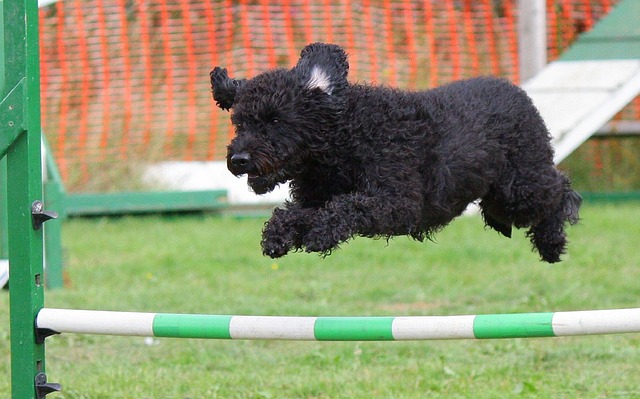The Ultimate Guide to Basic Dog Training Techniques
Training your dog is an essential part of responsible pet ownership that strengthens the bond between you and your canine companion. Whether you've recently welcomed a puppy into your home or are working with an adult dog, establishing clear communication and consistent training practices will help create a well-behaved pet that understands boundaries and expectations. This guide covers fundamental dog training techniques, from using hand signals and addressing behavioral issues to selecting appropriate training treats that will help reinforce positive behaviors.

Understanding Dog Training Hand Signals
Dog training hand signals provide a visual form of communication that can be incredibly effective, especially in noisy environments or when your dog is at a distance. Hand signals leverage dogs’ natural ability to read body language, often making them more intuitive for canines than verbal commands alone. Begin with basic signals paired with verbal cues, such as an open palm facing upward for “sit” or an extended arm with palm facing outward for “stay.” Consistency is crucial—always use the same hand position for each command to avoid confusing your dog. Over time, many dogs respond more reliably to hand signals than to verbal commands, particularly in distracting environments or if your dog experiences hearing loss later in life.
Mastering Basic Commands First
Before tackling complex behaviors or tricks, focus on establishing five core commands: sit, stay, come, heel, and down. These fundamental instructions form the foundation of all future training and are essential for everyday safety and management. Begin training sessions in a quiet environment with minimal distractions. Use clear, consistent verbal cues paired with appropriate hand signals. For instance, when teaching “sit,” say the word clearly while moving your hand upward with a flat palm. Reward your dog immediately when they perform the desired behavior. Once your dog responds reliably in a controlled setting, gradually introduce distractions to strengthen their response under varied conditions. Practice each command for 5-10 minutes daily rather than overwhelming your pet with lengthy sessions.
Choosing Effective Dog Training Treats
The right dog training treats can significantly impact your training success. Effective training treats should be small (about the size of a pea), soft enough to be consumed quickly, and highly appealing to your dog. Look for treats with strong aromas that capture your dog’s attention, such as small pieces of cooked chicken, cheese, or commercially available soft training treats. For maximum effectiveness, reserve special high-value treats exclusively for training sessions rather than everyday snacks. Consider your dog’s dietary needs and allergies when selecting treats, and adjust their regular meals to account for the additional calories consumed during training. Many trainers recommend having a hierarchy of treats—using medium-value treats for practicing known behaviors and saving premium treats for learning new, challenging commands or working in distracting environments.
Addressing Behavioral Issues Through Training
Many common behavioral problems can be resolved through consistent training approaches. For issues like excessive barking, first identify the trigger—whether it’s territorial behavior, attention-seeking, or anxiety. Once you understand the cause, you can implement targeted training techniques such as teaching a “quiet” command or redirecting to an incompatible behavior. For jumping on people, consistently turn away when your dog jumps and only provide attention when all four paws are on the ground. Destructive chewing often stems from boredom or anxiety, so increase physical exercise and mental stimulation while providing appropriate chew toys. For leash pulling, stop walking whenever tension occurs and only proceed when your dog returns to your side. Remember that consistency among all family members is crucial—mixed messages will confuse your dog and prolong the training process.
Using Clicker Training for Precision
Clicker training is a science-based method that uses a distinct clicking sound to mark the exact moment your dog performs a desired behavior. This technique allows for precise timing and clear communication. To begin clicker training, first “charge” the clicker by clicking and immediately giving your dog a treat, repeating until they associate the click with receiving a reward. Once established, use the clicker to mark correct behaviors followed by a treat. The advantage of clicker training lies in its precision—it marks behaviors instantly, whereas verbal praise might come seconds later when the dog is already doing something else. This method works particularly well for shaping complex behaviors incrementally or capturing spontaneous behaviors you want to encourage.
Establishing a Consistent Training Schedule
Consistency forms the cornerstone of effective dog training. Establish a regular training schedule with multiple short sessions throughout the day rather than occasional long sessions. Most dogs respond best to 3-5 training periods of 5-10 minutes each, spaced throughout the day. Keep training sessions positive and end on a successful note to maintain your dog’s enthusiasm. Create a distraction-free training environment initially, then gradually introduce controlled distractions as your dog masters each command. Document your dog’s progress to track improvements and identify areas needing additional focus. Remember that different breeds and individual dogs learn at varying rates—some may master commands quickly while others require additional repetition and patience.
Successful dog training requires patience, consistency, and positive reinforcement. By incorporating hand signals, addressing behavioral issues promptly, and using appropriate training treats, you’ll create clear communication channels with your dog. Remember that training is an ongoing process that strengthens your bond and ensures your canine companion can navigate the human world safely and confidently. The time invested in proper training will reward you with years of harmonious companionship and a well-behaved four-legged family member.






